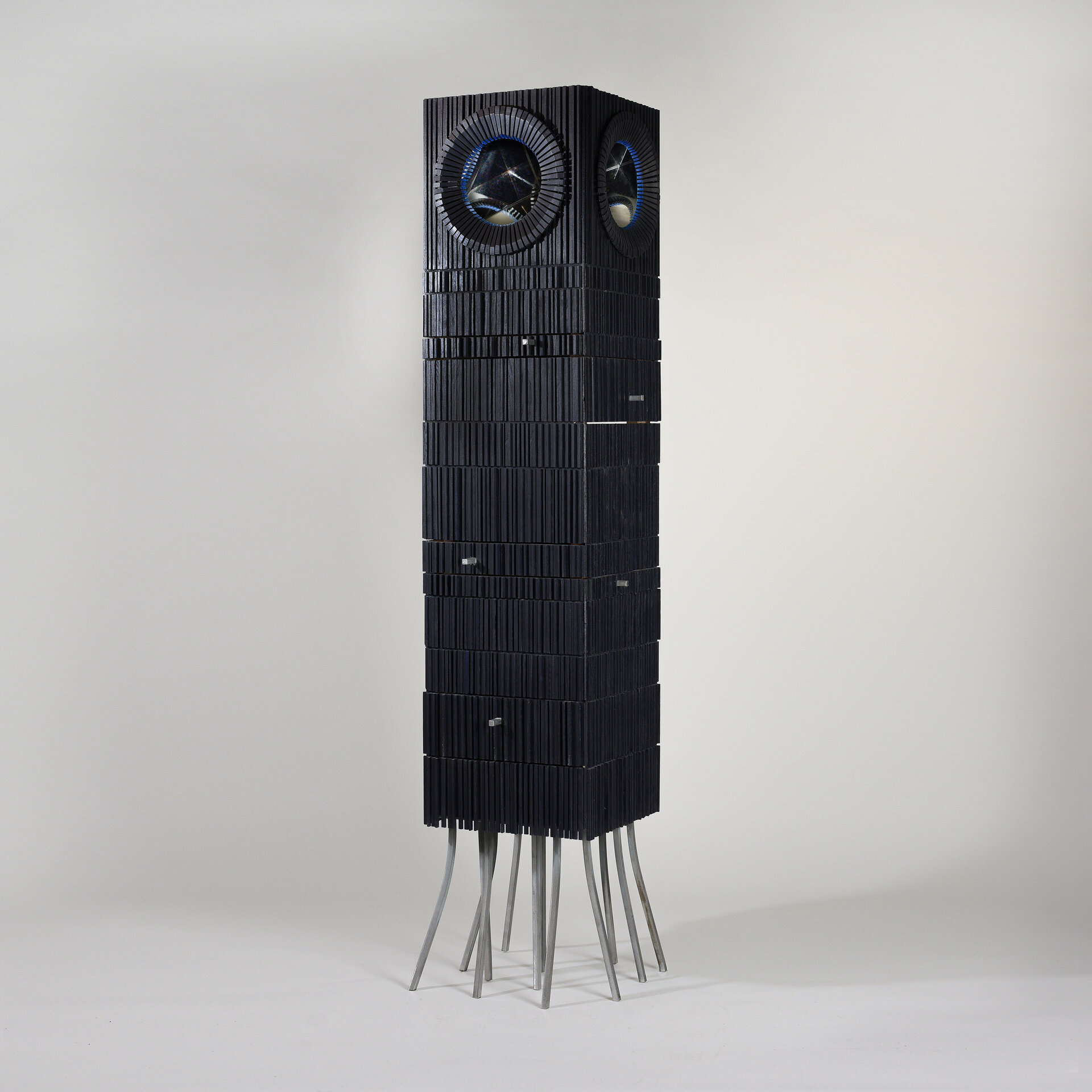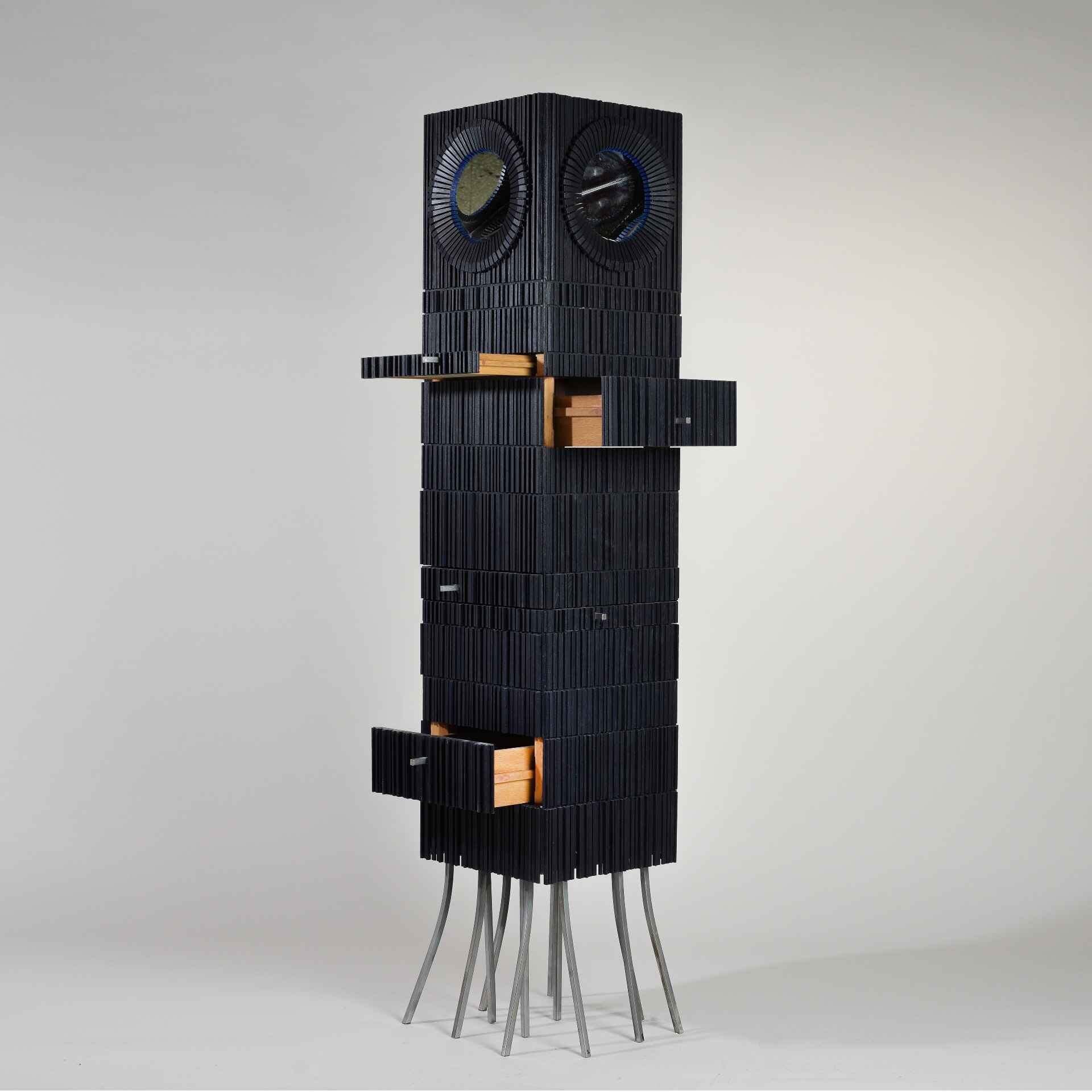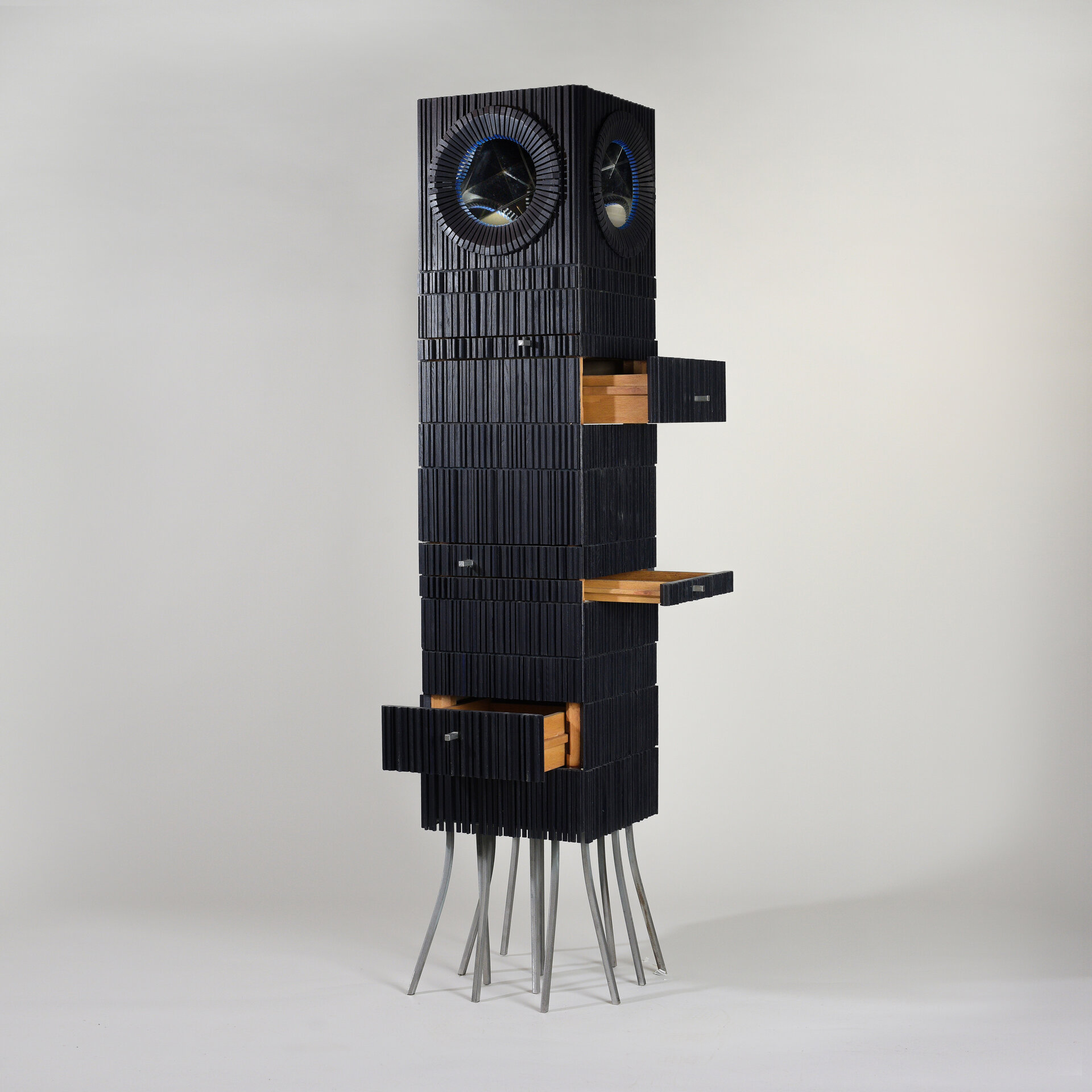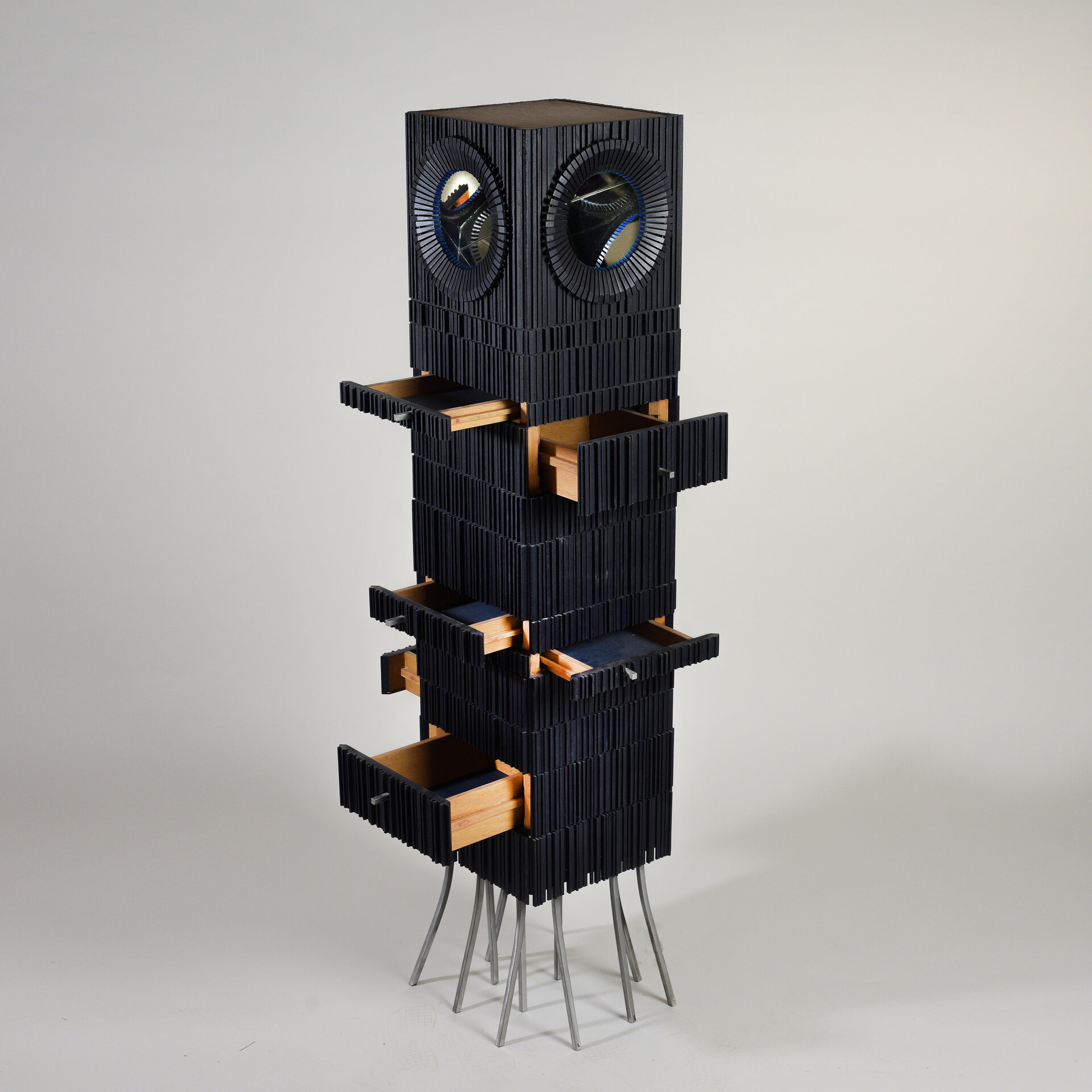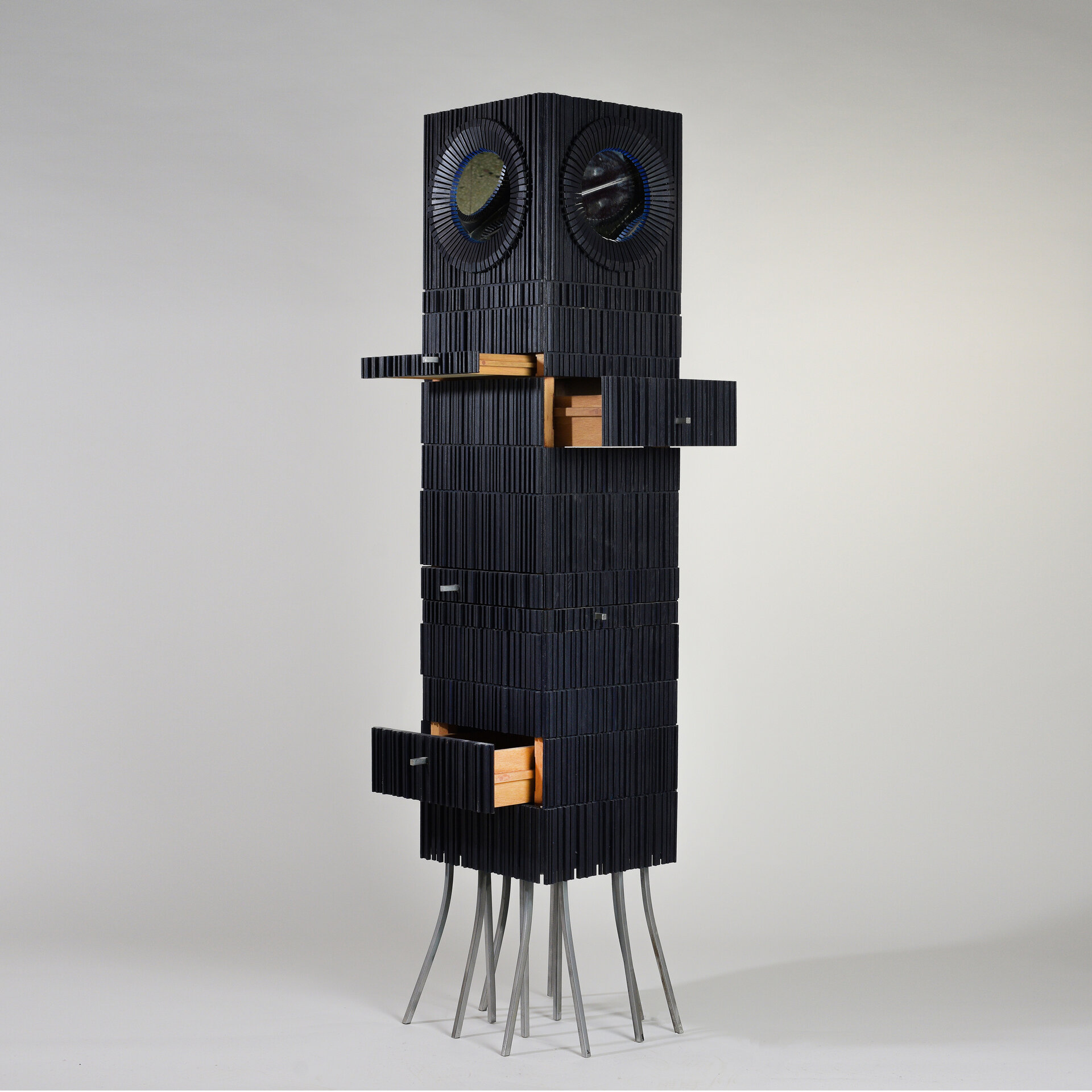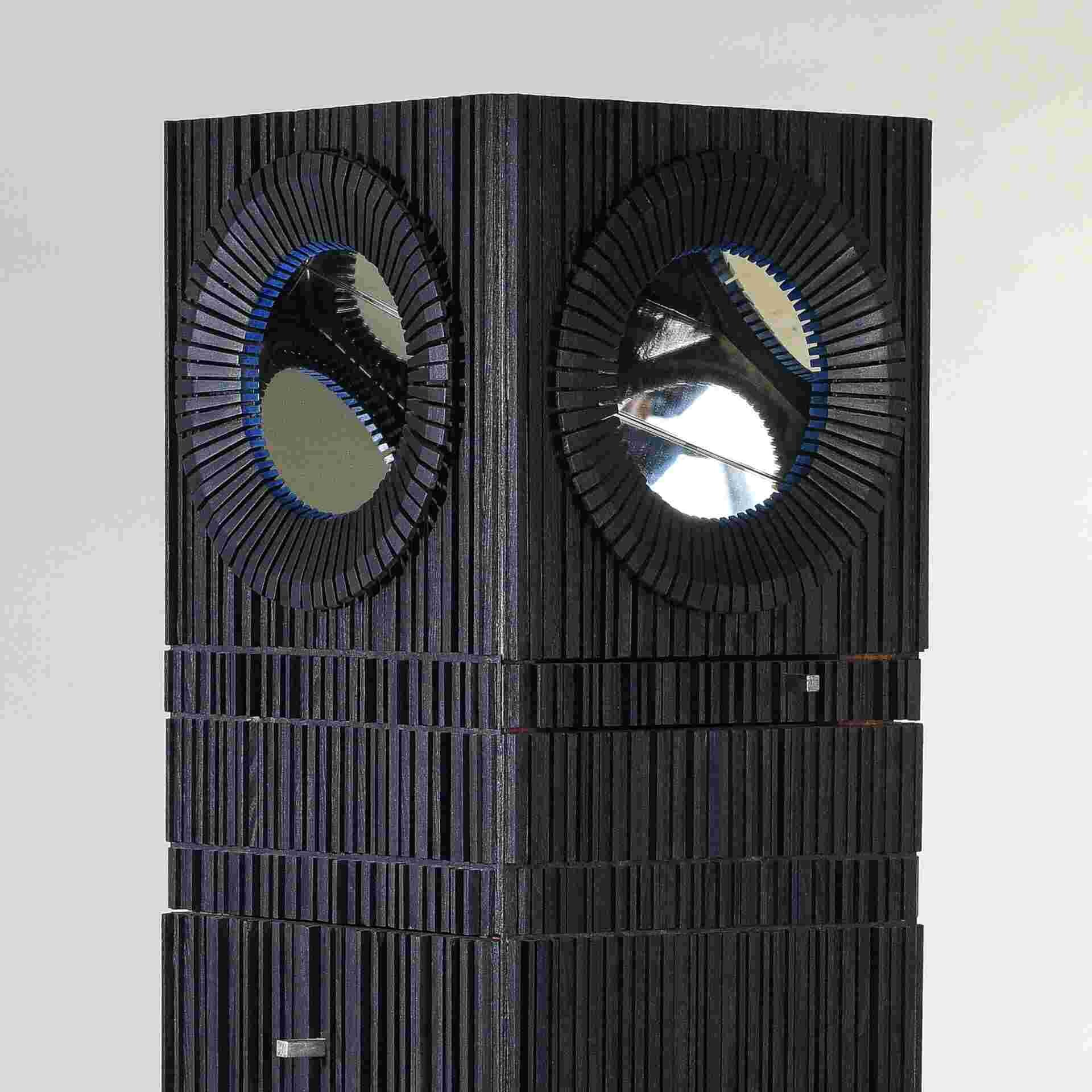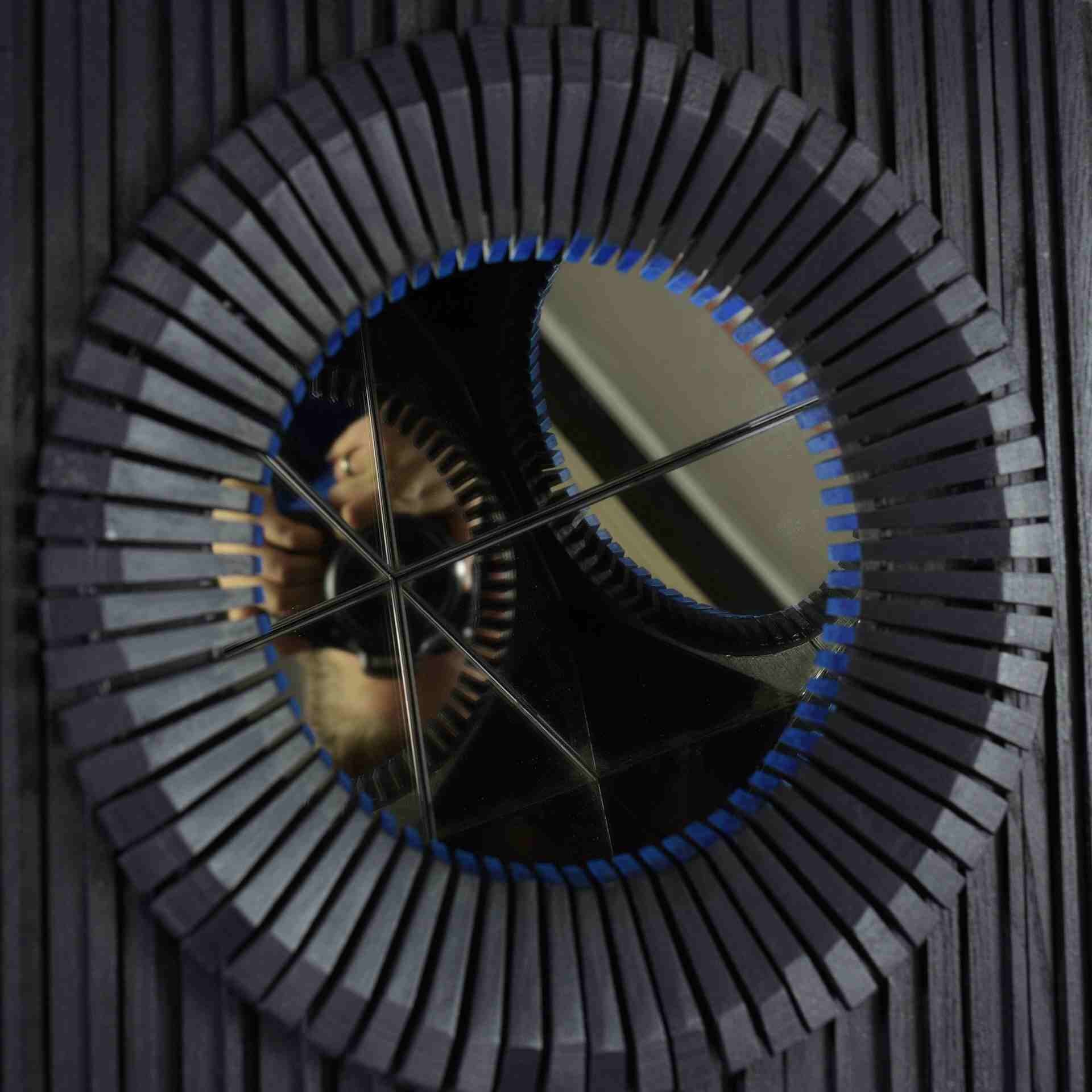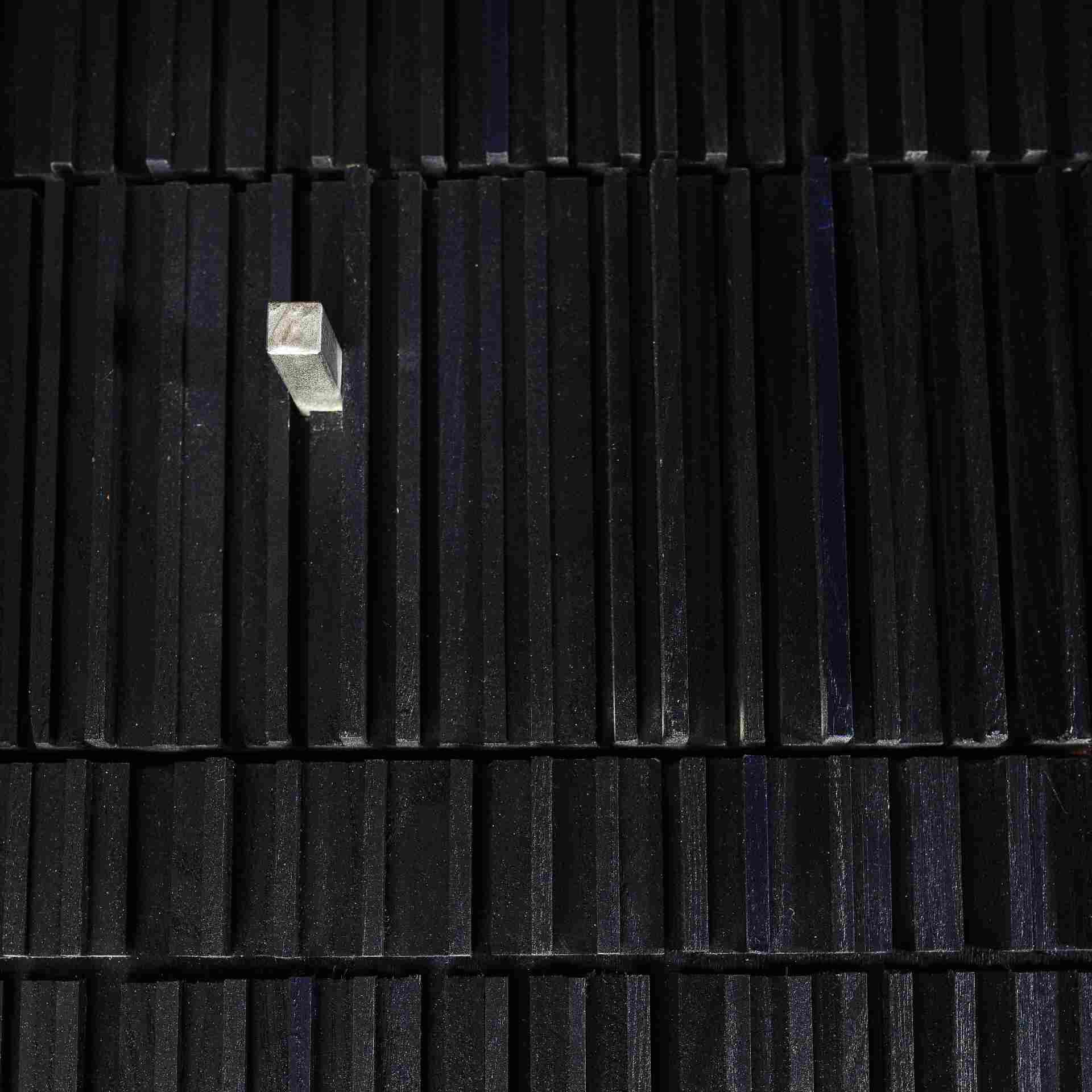
The Stalker
Authors’ Comment
The Stalker is that piece of furniture that one can't ignore. He stares into one's soul, reflecting facets of the viewer's self. He is the alter ego with many secret drawers, hidden behind a vertical dark texture. Initially created as a mystery chest of drawers, the Stalker also has four prismatic mirrors (corner reflectors) which reflect the viewer's eyes from every point one is standing, giving the impression that the viewer is being followed. This piece of furniture creates a visual and philosophical dialogue with anyone who interacts with it.
One of the things the Covid-19 Pandemic did to many, was to make people reflect upon themselves. The stalker is a vessel for people's alter ego, constantly and obsessively looking back. As the mirror image must have a soul, items and memory anchors of one's past self are kept in its drawers, concealed behind a vertical dark texture. The stalker is inspired by a person who discovers the partner's secrets, relating to the other person almost as to himself, as a mirror image, while keeping some private things hidden in secret drawers.
The construction of the chest of drawers is made out of solid wood. The wooden frame contains eleven non-identical drawers, which are unevenly distributed on all four sides of the piece of furniture. All the drawers have different rights and fit in the whole depth of the structure. They are made using plywood, on which a texture of wooden vertical wands was applied (which continue the general vertical pattern), subtly integrating the enclosures within the design. It is the tinned steel handles that indicate the position of the drawers. The whole process was an experiment, as the project developed organically, the piece being built manually from the construction level to its last detail. There were also details that had to be changed along the way. The piece of furniture respects the three registers corresponding with the human body: head-body-legs. We believe in the idea of makers, that by building manually a piece of furniture one can also create a piece of art. By working manually, the design decisions are more assumed at a detail level. The general concept, the structure, and all the details including the finishing is also a controlled result of more tries.
